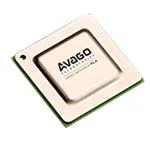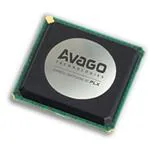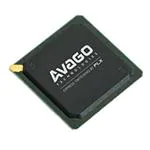STM32F103RET6 ピン配置 | Arduino & VS STM32F103RCT6
- コアプロセッサ: ARM® Cortex®-M3
- コアサイズ: 32ビットシングルコア
- 周辺機器: DMA、モーター制御 PWM、PDR、POR、PVD、PWM、温度センサー、WDT
- パッケージ: 64-LQFP

HK$250.00以上のご注文で送料無料

迅速な対応、迅速な見積もり

すぐに発送、アフターサービスも安心

オリジナルチャネル、本物の製品の保証
stm32f103ret6
If you’re looking into the STM32F103RET6 microcontroller, it’s a great pick for lots of projects. It runs on a 32-bit ARM Cortex-M3 core at up to 72 MHz, so you’ll get plenty of processing power for real-time tasks and signal handling.
You also get a generous 512 KB of flash memory, which means there’s room for pretty complex code, plus 64 KB of SRAM for your variables and buffers.
Connectivity-wise, it’s well-equipped: multiple USART, SPI, and I²C interfaces make hooking up sensors and external modules straightforward. There’s even a CAN bus built-in, perfect if you’re working on automotive or industrial control projects.
For analog work, it comes with a 12-bit ADC (up to 16 channels) and two DACs, handy for precision data collection or outputting audio signals.
It supports various low-power modes, ideal for battery-operated devices, runs comfortably on 3.3V, and the 64-pin LQFP package makes PCB design easier. It’s widely used in industrial equipment, consumer electronics, automotive systems, and IoT applications.
stm32f103ret6 pinout and peripherals

| ピン番号 | ピン名 | 説明 |
|---|---|---|
| 1 | VBAT | RTC and backup register power input (Battery powered) |
| 2 | PC13/TAMPER-RTC | GPIO or RTC tamper detection input |
| 3 | PC14/OSC32_IN | GPIO or RTC oscillator input (32.768 kHz) |
| 4 | PC15/OSC32_OUT | GPIO or RTC oscillator output (32.768 kHz) |
| 5 | PD0/OSC_IN | GPIO or main oscillator input (High speed 8MHz) |
| 6 | PD1/OSC_OUT | GPIO or main oscillator output (High speed 8MHz) |
| 7 | NRST | Chip reset input (Active low) |
| 8 | VSSA | アナロググラウンド |
| 9 | VDDA | Analog power supply input (2.0~3.6 V) |
| 10 | PA0 | GPIO, ADC_IN0, WKUP |
| 11~26 | PA1~PA15 | GPIO, ADC, USART, SPI, Timer |
| 27~34 | PB0~PB7 | GPIO, ADC, SPI, I2C, Timer |
| 35 | ブート0 | Boot mode selection pin (controls boot method) |
| 36 | PB8 | GPIO, I2C1, Timer |
| 37 | PB9 | GPIO, I2C1, Timer |
| 38 | VSS | デジタルグラウンド |
| 39 | VDD | Digital power supply (2.0~3.6 V) |
| 40 | PB10 | GPIO, USART3, I2C2 |
| 41~42 | PB11~PB12 | GPIO, USART3, SPI2, I2C2, Timer |
| 43~46 | PB13~PB15 | GPIO, SPI2, Timer |
| 47~54 | PC6~PC13 | GPIO, USART, ADC, Timer |
| 55 | VSS | デジタルグラウンド |
| 56 | VDD | Digital power supply (2.0~3.6 V) |
| 57 | PA8 | GPIO, USART1, Timer |
| 58~61 | PA9~PA12 | GPIO, USART, USB Interface |
| 62~63 | PA13~PA14 | SWD/JTAG Debug interface |
| 64 | PA15 | GPIO, SPI1, JTAG Interface |
If you’re using the STM32F103RET6, you’ll find it packed with handy peripherals. You’ve got up to five USART ports for flexible serial communication, three SPI interfaces (SPI1 to SPI3), and two I²C channels for easy sensor connections. Plus, there’s a built-in CAN bus, ideal if you’re working on automotive or industrial gear, and a USB 2.0 interface for PC communication.
When connecting power, feed it with a stable 3.3V supply, and don’t forget to add some decoupling capacitors (like a 0.1µF and a 10µF) close to your VDD pins. For the reset line (NRST), using a 10kΩ resistor to pull it up and adding a small capacitor gives a smooth startup reset.
For clock sources, pick an 8 MHz crystal for the main oscillator, and a 32.768 kHz crystal if you’re planning to use the real-time clock. Also, double-check the BOOT0 pin—tie it low for normal startup from flash, or high if you’re doing firmware updates. Keep analog and digital grounds separate but joined at one single point to improve ADC accuracy.
stm32f103ret6 equivalent stm32 mcu

| パラメータ/モデル | STM32F103RET6 (Original) | STM32F103RDT6 | STM32F103RCT6 | STM32F103RFT6 |
|---|---|---|---|---|
| コアアーキテクチャ | ARM Cortex-M3 | ARM Cortex-M3 | ARM Cortex-M3 | ARM Cortex-M3 |
| 動作周波数 | 72MHz | 72MHz | 72MHz | 72MHz |
| フラッシュメモリ | 512 KB | 384 KB | 256 KB | 768 KB |
| SRAMサイズ | 64 KB | 64 KB | 48 KB | 96KB |
| USART Channels | 5 | 5 | 5 | 5 |
| SPI Channels | 3 | 3 | 3 | 3 |
| I²C Channels | 2 | 2 | 2 | 2 |
| ADCチャンネル | 16 channels, 12-bit | 16 channels, 12-bit | 16 channels, 12-bit | 16 channels, 12-bit |
| CAN Interfaces | 1 (CAN 2.0B) | 1 | 1 | 1 |
| USB Interface | Yes (USB 2.0 FS) | はい | はい | はい |
| パッケージタイプ | LQFP-64 | LQFP-64 | LQFP-64 | LQFP-64 |
When swapping out your STM32F103RET6 for a similar model, keep these tips in mind to avoid headaches later on. First, double-check the Flash memory size—chips like STM32F103RCT6 (256KB) or STM32F103RDT6 (384KB) might limit your code if your existing project needs all of the original 512KB. If you’re thinking of expanding, going for a bigger option like STM32F103RFT6 (768KB) is smarter.
SRAM size is crucial too. If you’re already making full use of the original 64KB RAM, a smaller 48KB variant might not cut it, affecting speed and multitasking. The good news is that these chips share identical peripherals and pin layouts, making hardware swaps straightforward. Still, always re-verify critical areas like ADC accuracy and communication interfaces after replacement.
Lastly, check your power and reset circuits carefully after switching, even though pin compatibility is good. And don’t forget to consider availability and pricing to make sure your new choice fits your project’s budget and timeline.
stm32f103ret6 minimum system circuit

When you’re setting up your STM32F103 board, the power section is critical. Feed it a stable 3.3V supply, and don’t skip those decoupling capacitors like C1, C5 through C12—they help filter noise, keeping your chip running smoothly. For the analog pins (VDDA/VSSA), always use separate decoupling to protect your ADC accuracy.
Your reset pin (NRST) needs a 10kΩ resistor pulling it to 3.3V, so the microcontroller won’t randomly reset itself. You might also add a jumper or button here for manual resets if needed.
Use a 16 MHz crystal (with 8pF capacitors) for the clock. Make sure these capacitors match your crystal specs precisely to keep the timing accurate. The BOOT0 pin should usually connect to ground for booting from flash, unless you plan to update firmware via ISP.
Finally, watch your analog grounds—connect VSSA to digital ground (VSS) at just one point. Double-check GPIO connections and USB lines to avoid voltage mismatches or accidental damage.
stm32f103ret6 development board schematic
If you’re building something with the STM32F103RET6 microcontroller, here’s a quick rundown of what you’ll need on your board. First, the main chip is powerful, running up to 72MHz with plenty of memory (512KB flash, 64KB SRAM), and tons of useful interfaces like USART, SPI, I²C, CAN, ADC, and USB.
Make sure your power supply is stable—use a good 3.3V regulator like the AMS1117-3.3, add decoupling capacitors, and a handy power LED. Include a reset circuit with a 10kΩ resistor to keep the MCU stable at startup, and a button for manual resets.
For accurate timing, choose an 8 or 16MHz crystal with proper load capacitors. Optionally, a 32.768kHz crystal can run your real-time clock. Don’t forget the BOOT0 pin configuration—use a jumper or switch for easy firmware updating.
Include standard debugging connectors (SWD or JTAG) and reserve pins for communication (USART, SPI, I²C, and CAN). Add USB connectivity and optional external storage like SPI flash. Finally, throw in a few buttons and LEDs for simple user interactions.
















.jpg)











